Leaflets
The Helford Marine Conservation Group has published a series of information leaflets covering some of the important aspects of the Helford river environment and its wildlife.
All leaflets are free to download, we hope that you will find them informative and enjoyable.
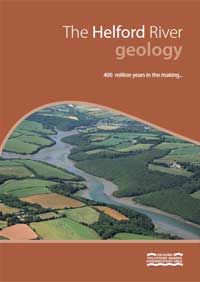 Geology
Geology
The Helford River area has a history extending back almost 400 million years. Its geology records events associated with the movement of past geological plates, the subsequent formation of the river, and its modification by dramatic rises and falls of sea level particularly during the climate changes of the Ice Age, creating a drowned river valley known as a ria.
Today the river is some 9.2 km long, widening seawards and has many creeks running into it, most of which dry to mud at low tide. The actual shoreline of the Helford (44.3 km) is five times longer than its length. The tidal area is 568 ha, of which one third (186 ha) is intertidal. The river is unusual in that, lying on the eastern side of the Lizard Peninsula, it is protected from the dominant southwesterly winds and swell and is only exposed to easterlies.
Download The Helford River geology information leaflet – 408kb
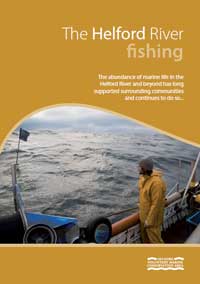 Fishing
Fishing
Many early human settlements were based around coasts and estuaries where seafood could always be found. The abundance of marine life in the Helford River has long supported surrounding communities and continues to do so.
Every Good Friday, families turn out to go “Trigging”, the hand collection of cockles, thus perpetuating a millennia–old tradition. Meanwhile, the Duchy of Cornwall Oyster Farm carries Helford’s shellfish industry into the twenty first century. A vibrant fishing fleet is also based in the river. The Helford River is in fact one of the few remaining tidal water private fisheries in Britain and is owned by the Duchy of Cornwall.
Download The Helford River fishing information leaflet – 722kb
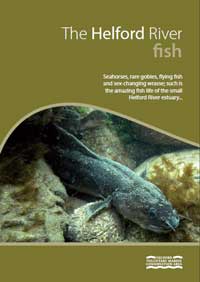 Fish
Fish
Seahorses, rare gobies, flying fish and sex-changing wrasse; such is the amazing fish life of the relatively small Helford River estuary.
The rich sheltered waters are an important nursery ground and in late summer teem with small glittering fishes.
The shallow waters offer safety from many predators, though not from egrets and kingfishers; while the mud and plant life is home to tasty shrimps and worms.
Download The Helford River fish information leaflet – 751kb
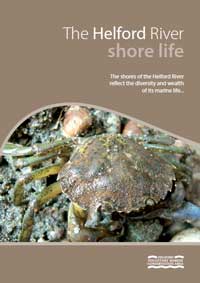 Shore life
Shore life
The shores of the Helford River reflect the diversity and wealth of its marine life. It is a ria, an inundated river valley, similar to an estuary but with very limited freshwater inflow.
The shore is a dynamic place; cycles of life are determined by the twice-daily ebb and flood of the tide. The sea is a constant environment of saline, oxygen-rich, water that only slowly changes in temperature.
The hardy plants and animals that can survive the harshness of the upper shore have few competitors for space, light and food, while those at the sheltered lower levels face constant strife with competitors, grazers and predators.
Download The Helford River shorelife information leaflet – 875kb
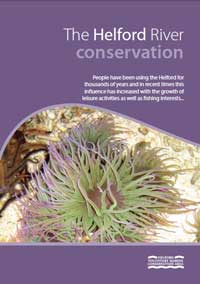 Conservation
Conservation
The Helford River, often referred to as the Helford estuary, on the east side of the Lizard Peninsula, is one of Cornwall’s most beautiful marine inlets and the only one running east-west. It stretches nearly 10 km inland with a shoreline of about 47 km!
Technically described as a ‘ria’, this ancient river valley was last drowned when sea levels rose some 10,000 years ago after the most recent Ice Age and, with a low freshwater input, is fully marine to the very top of its many steep-sided, muddy creeks.
Download The Helford River conservation information leaflet – 1,000kb
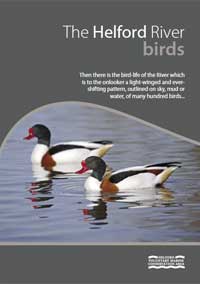 Birds
Birds
The seemingly lifeless mud and silts of the River bed are home for vast numbers of worms, molluscs and crustaceans. For many birds, this is an opportunity not to be missed: an enormous supermarket filled to the brim with food!
The Helford Marine Conservation Group is grateful to its co-sponsors the Cornwall Bird-Watching and Preservation Society, to Martin Rule for assistance with the text and for the photographs by David Chapman.
Download The Helford River birds information leaflet – 302kb
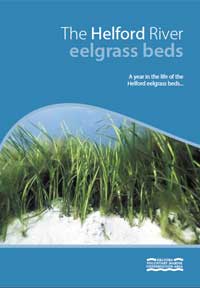 Eelgrass beds
Eelgrass beds
A year in the life of the Helford River eelgrass beds.
Eelgrass (Zostera) and its grass-like relatives are true flowering plants that grow and thrive submerged in seawater. If you walk down to Grebe beach or any other cove between Durgan and Toll Point on the north shore of the Helford River at very low tide you might glimpse the green strands of eelgrass swaying in the water just offshore. Sprouting from a sandy sea floor with occasional seaweed covered rocks, these estuarine beds are very special as they provide shelter from strong currents and predators and play host to so many different sea creatures.
Download The Helford River Eelgrass beds information leaflet – 227kb
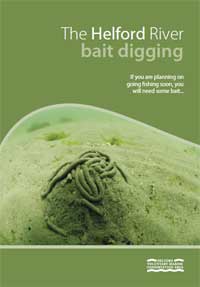 Bait digging
Bait digging
On the Helford River, local people have dug a few bait worms for personal use for as long as anyone can remember. In the winter of 1991, the digging suddenly intensified with up to 12 people at a time working at low tide, mostly in Gillan Creek. At the end of the winter, the once quiet creeks had come to resemble a battlefield, with the mounds and basins left behind persisting for months. In addition the narrow local roads had been obstructed by cars parking in the passing places.
No one resents occasional digging, but there is widespread local resentment that commercial diggers were exploiting the resource without paying any regard to either wildlife or the local community. In consequence, a Code of Conduct was agreed with Cornish angling groups and commercial digging actively discouraged in the HVMCA.
Download The Helford River bait digging information leaflet – 244kb
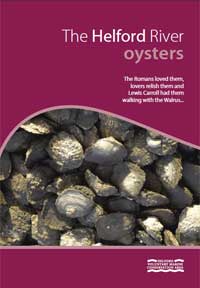 Oysters
Oysters
The Helford has long been noted as a ‘natural habitat’ for oysters. They once occurred in seemingly limitless number on the River’s fertile beds, but collection and consumption increased until they almost became extinct in the 19th Century.
Farming of oysters began in the early part of the 20th century and numbers have since recovered as a result of careful husbandry.The oyster fishery is one of the survivors of the once vast marine economy on the River.
Download The Helford River oysters information leaflet – 241kb
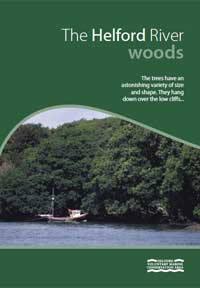 Woods
Woods
The woods have a rich and diverse wildlife. In spring and early summer there are spectacular displays of bluebells, dotted with the white of wood anemone and the pink of campion.
Scattered here and there are rarer native plants like the lovely wild service tree. The mild humid conditions are ideal for ferns, mosses, lichens and liverworts. Usually unobtrusive and scarcely noticed, here they are in such profusion that trees are clothed in green/grey hues. Buzzards and sparrowhawks patrol the area from their nesting sites, deep within the trees. Finches, tits and woodpeckers are much in evidence as they go about their busy lives. Small and larger mammals: voles, mice, foxes and badgers, are fleetingly seen or noticed only by their tracks.
Download The Helford River woods information leaflet – 374kb







